THE DONBAS WAR: UKRAINE’S FROZEN CONFLICT
Following the 2014 Euromaidan Revolution in Kyiv, which saw the ouster of the then president Viktor Yanukovich and a move to seek closer ties with the west and NATO, Ukraine saw the eastern portion of the country plunged into a civil war when Russia annexed Crimea and the cities of Donetsk and Luhansk declared themselves independent republics with the backing of the Russian war machine. While initially the conflict sparked international coverage, six years into war much of the world has forgotten a deadly conflict is still raging in the region. With over 13,000 dead and over 1 million displaced, the war is anything but over for those living in the gas rich Donbas region. In 2019 I traveled to Ukraine and spent 3 months living between Kyiv, where the 5 year anniversary of Euromaidan was occurring, and living with soldiers on the frontlines of the war where the most violent battles of the war continued to be fought.

Katya Nalobina, a Ukrainian soldier in the 54th Mechanized Rifle Brigade, and her adopted dog Ser’Oga pose for a portrait in Zolote-4 near ‘Point Zero’ on February 25, 2019. Zolote-4 and ‘Point Zero’ as it is called by soldiers, is one of the most dangerous positions on the frontline of the Donbas War. The small town frequently comes under mortar and artillery barrages, and throughout the day and night, sporadic firefights erupt without notice.

An elderly couple walks past a destroyed home on the outskirts of Pisky on March 20, 2019. Pisky, a small town on the fringes of Avdiivka and the Donetsk Airport, remains uninhabitable after 5 years, most of the buildings have been destroyed beyond repair and hundreds of tons of unexploded ordnance and landmines litter the landscape.
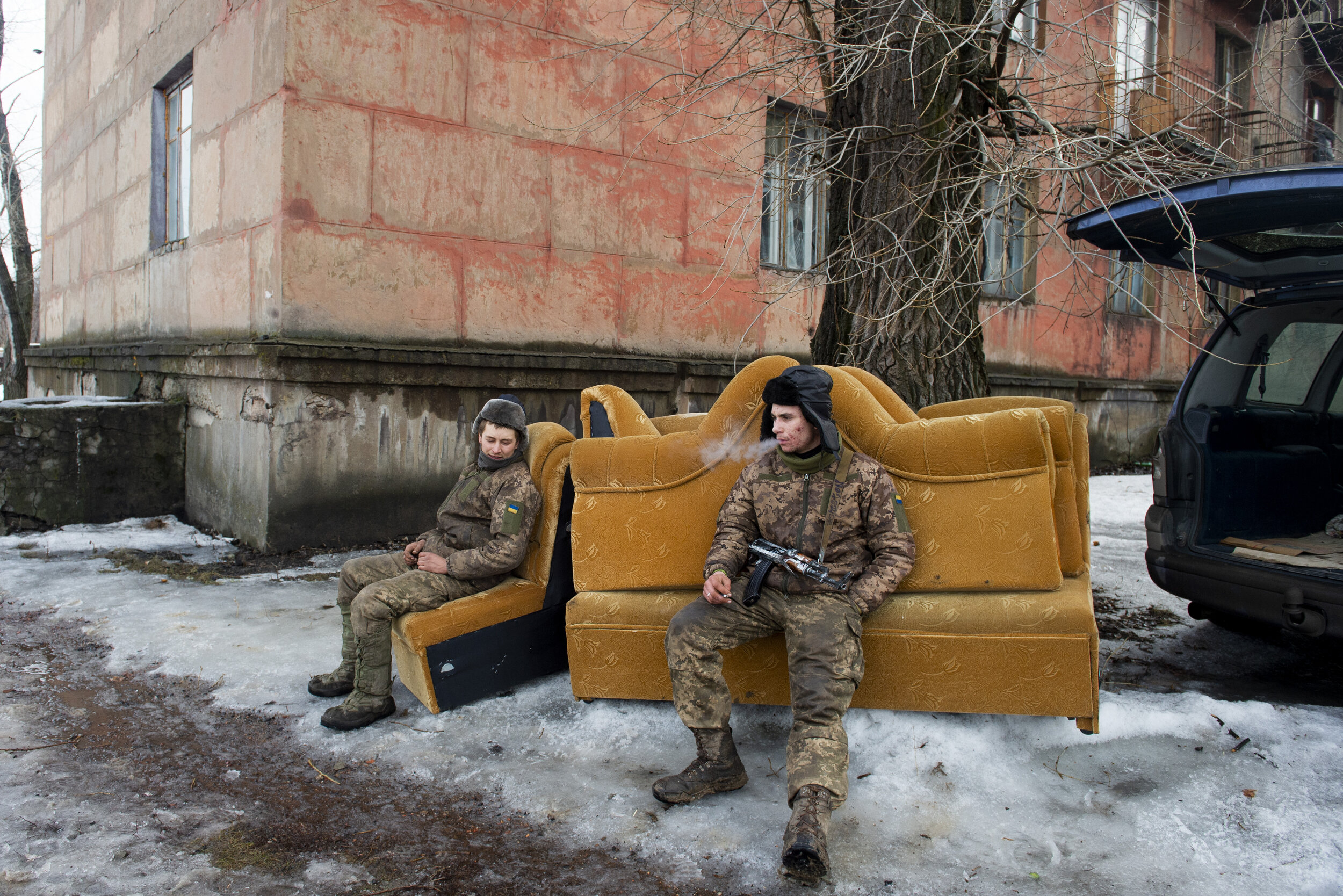
Soldiers of the 54th Mechanized Rifle Brigade take a smoke break while assisting civilians to move during a brief lull in separatist shelling on March 1, 2019 in Zolote-4. The small city of Zolote has been on the frontlines of the Donbas War since its beginning and has seen the lines change several times, due to economic restrictions the civilians who do remain often spend their nights in their basements hiding from separatist shelling.
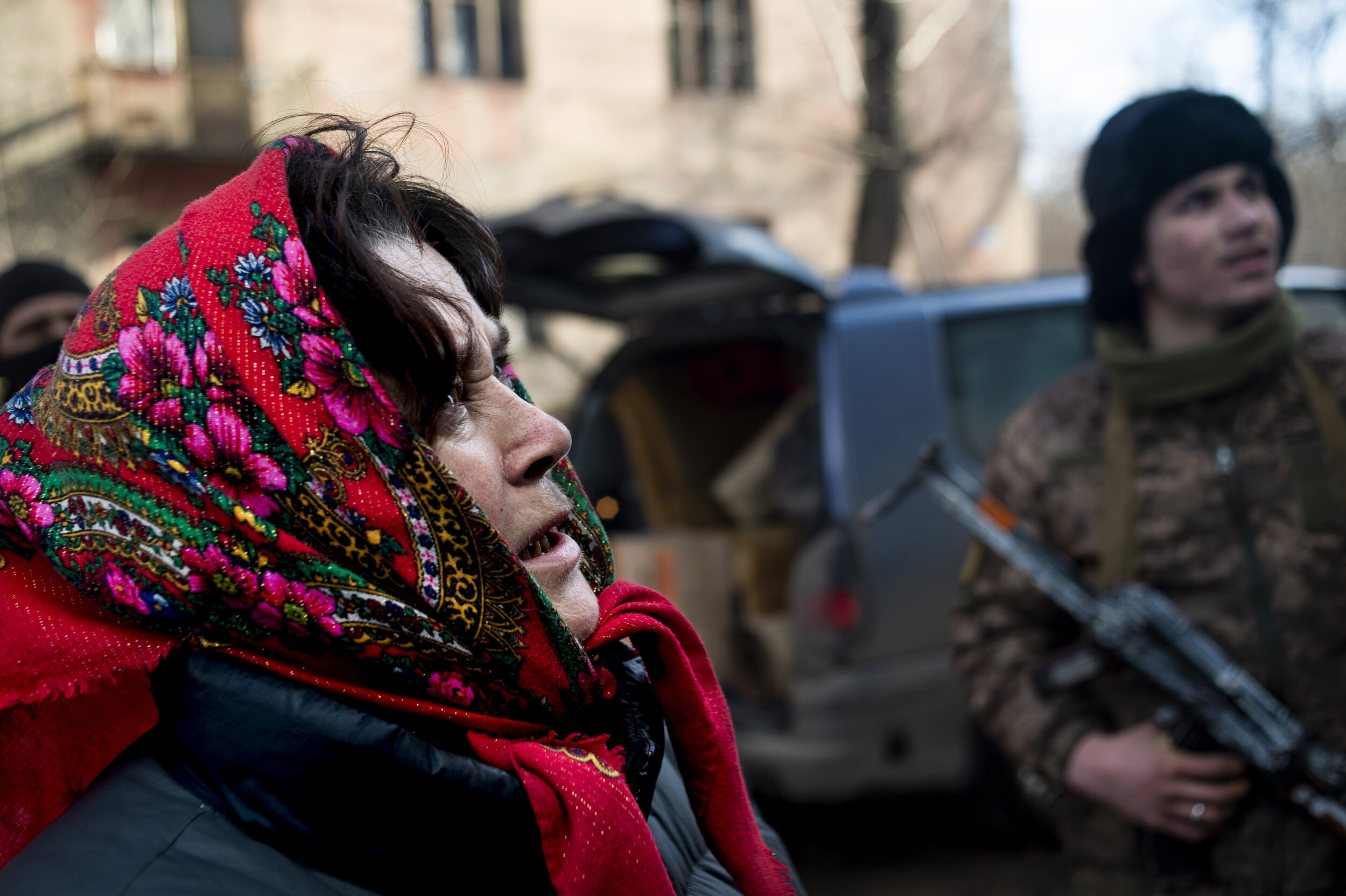
A woman takes one final look at her apartment building in Zolote-4 which was hit several times by rockets the previous night before she and other civilians move to a different village several miles from the frontline on March 1, 2019.
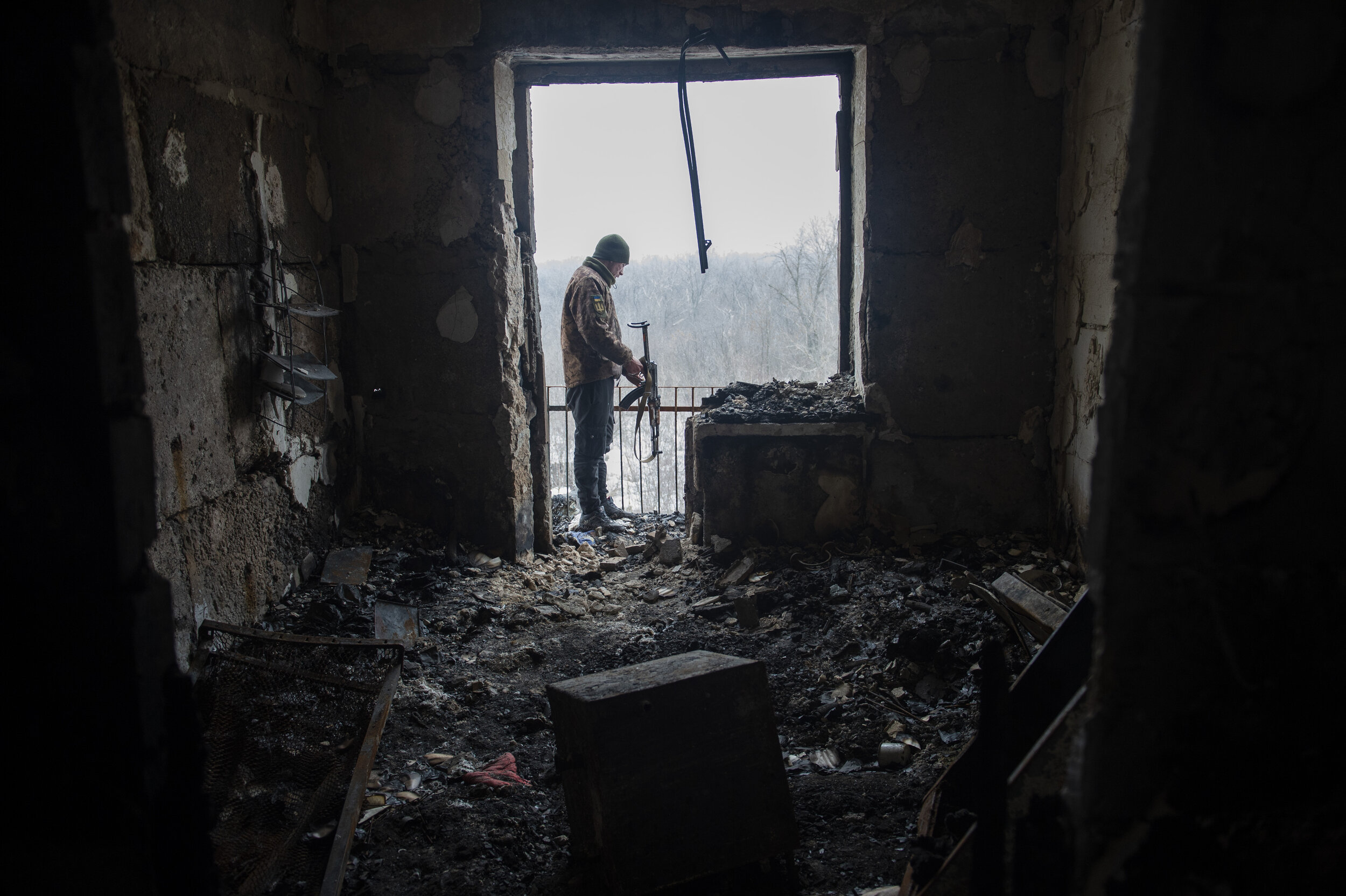
A Ukrainian soldier inspects the damage to a building in Zolote-4 that was hit by a rocket during a night of intense fighting on February 25, 2019. Firefights are a common occurrence near ‘Point Zero’ in Zolote where Ukrainian military and Russian backed separatists are separated by only a few hundred meters.
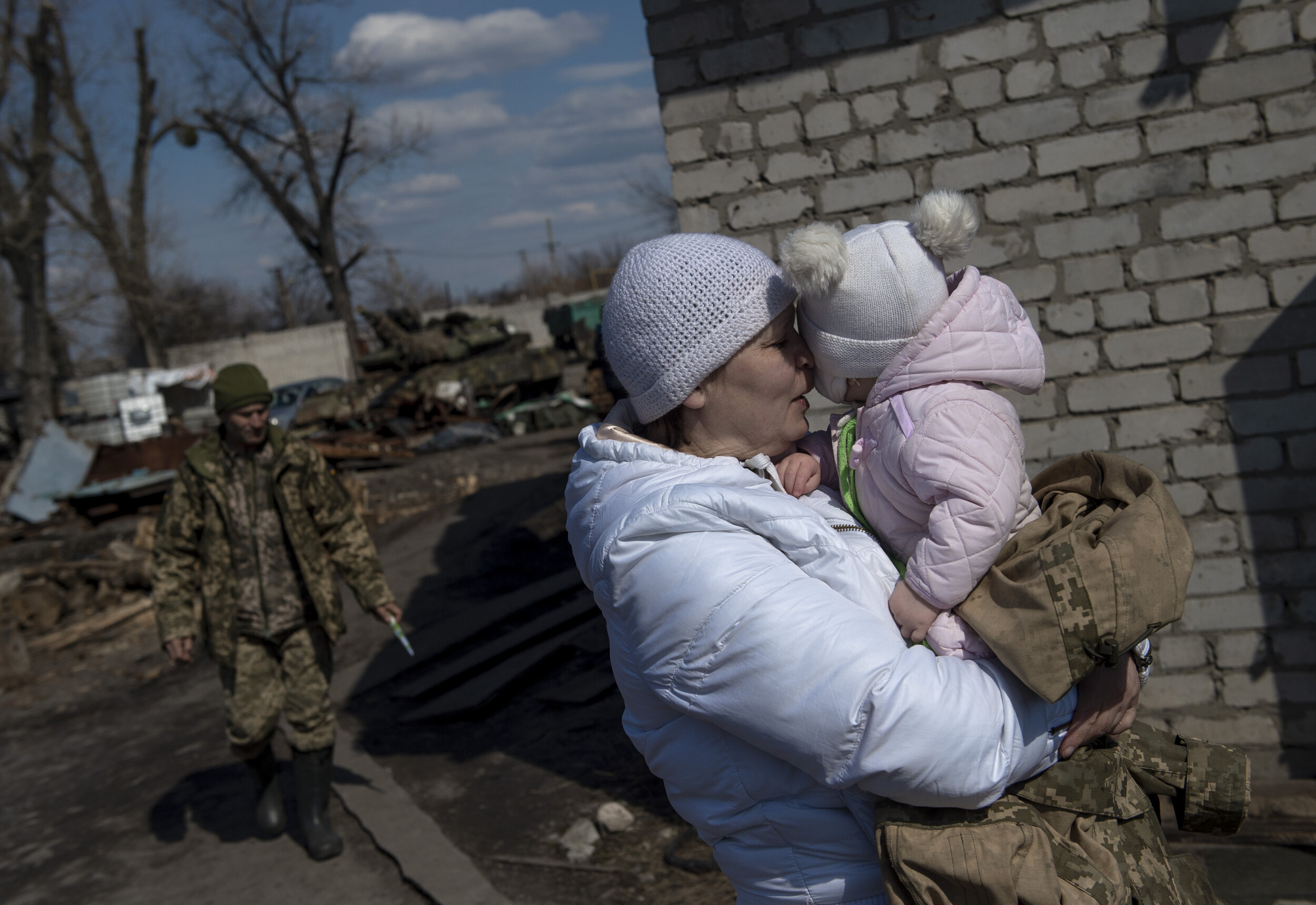
A woman embraces her granddaughter while visiting the young girl’s father at a military outpost several miles from the frontlines. While most soldiers find themselves spending months at a time away from loved ones, others find themselves stationed near their hometowns where they manage to visit relatives when not on duty.
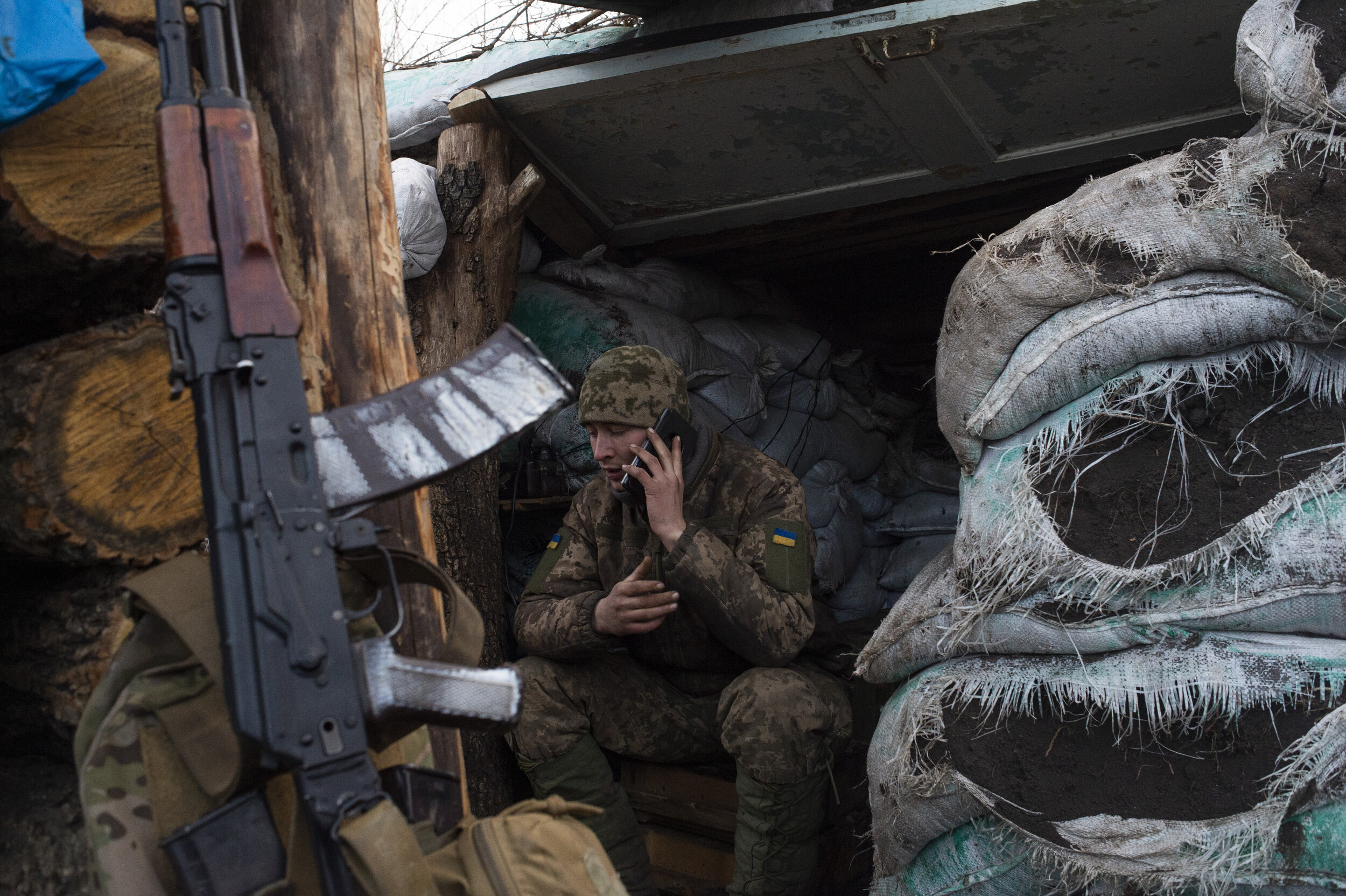
A soldier of the 54th Mechanized Rifle Brigade speaks to his wife on his phone while manning the front position of ‘Point Zero’ in Zolote-4 on February 28, 2019. Periodic bouts of quiet often breed boredom and anxiety in the soldiers, who find themselves eager for some sort of action.
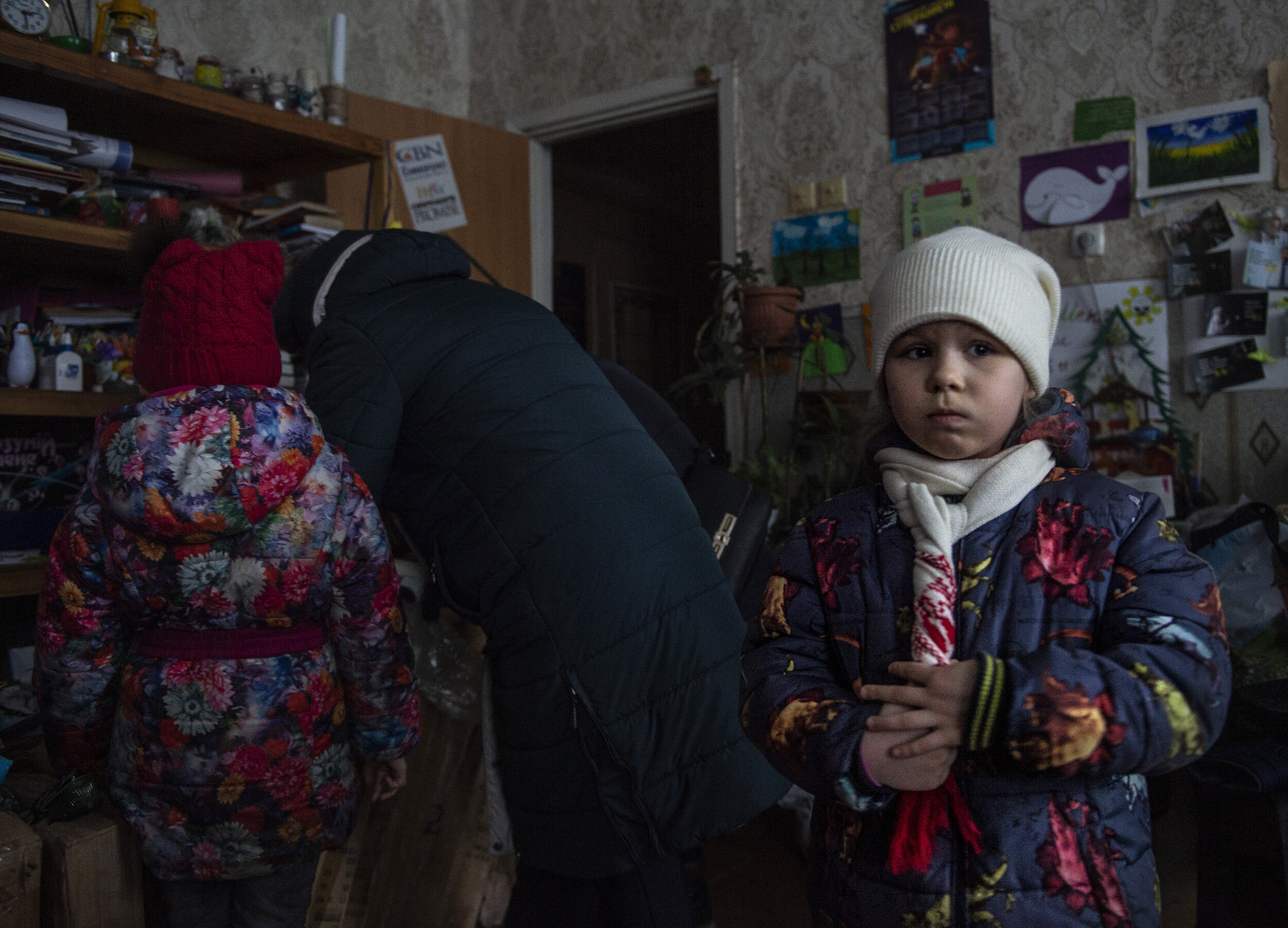
A young girl anxiously listens to the distant rumble of shelling while her mother and sister gather clothing and bedding at a makeshift aid station set up by a church group in Zolote. Civilians are often confined to their homes due to the dangers of sporadic fighting along the frontline, for some venturing out to get food or clothing means braving shelling and crossing minefields.
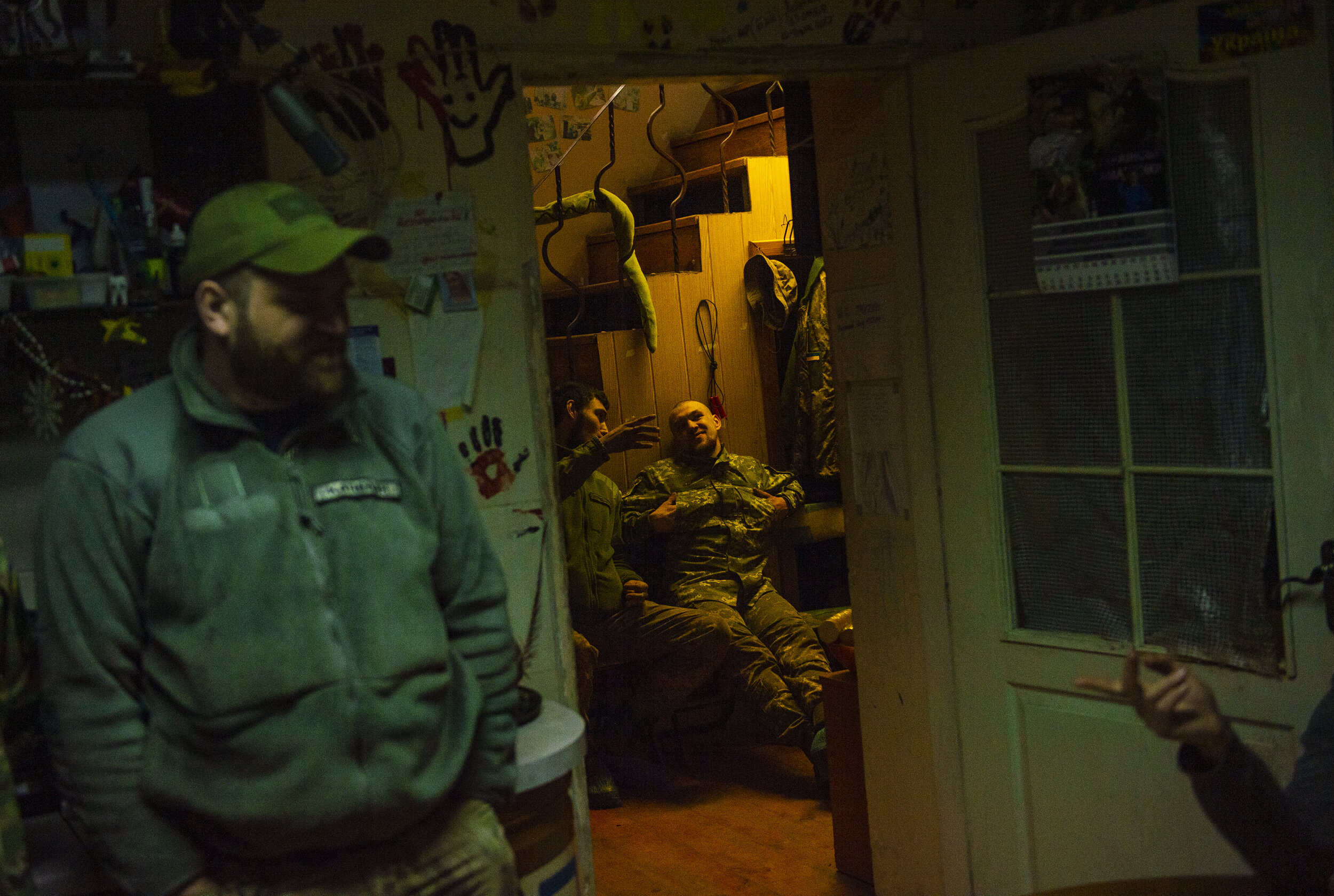
Ukrainian soldiers joke and chat while sitting in the waiting room of a makeshift dentist’s office on the outskirts of the Donetsk frontline on March 21, 2019.
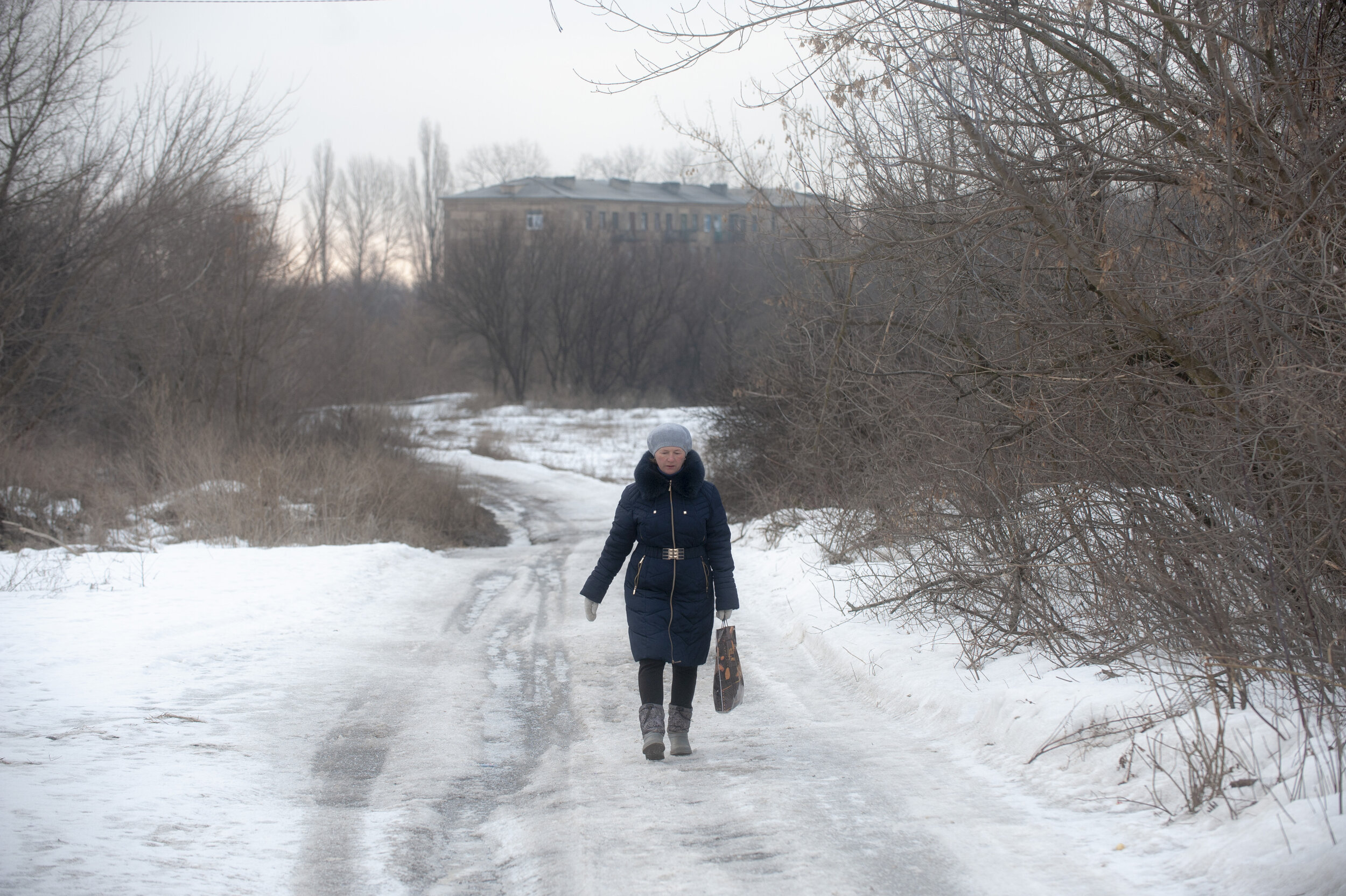
A teacher at the Zolote-4 elementary school braves the long lonely walk from ‘Point Zero’ to town every day to teach the few remaining students at her school. Despite the best efforts of teachers to continue providing education on the frontlines, lack of electricity, constant shelling, and fewer and fewer resources weigh against them.
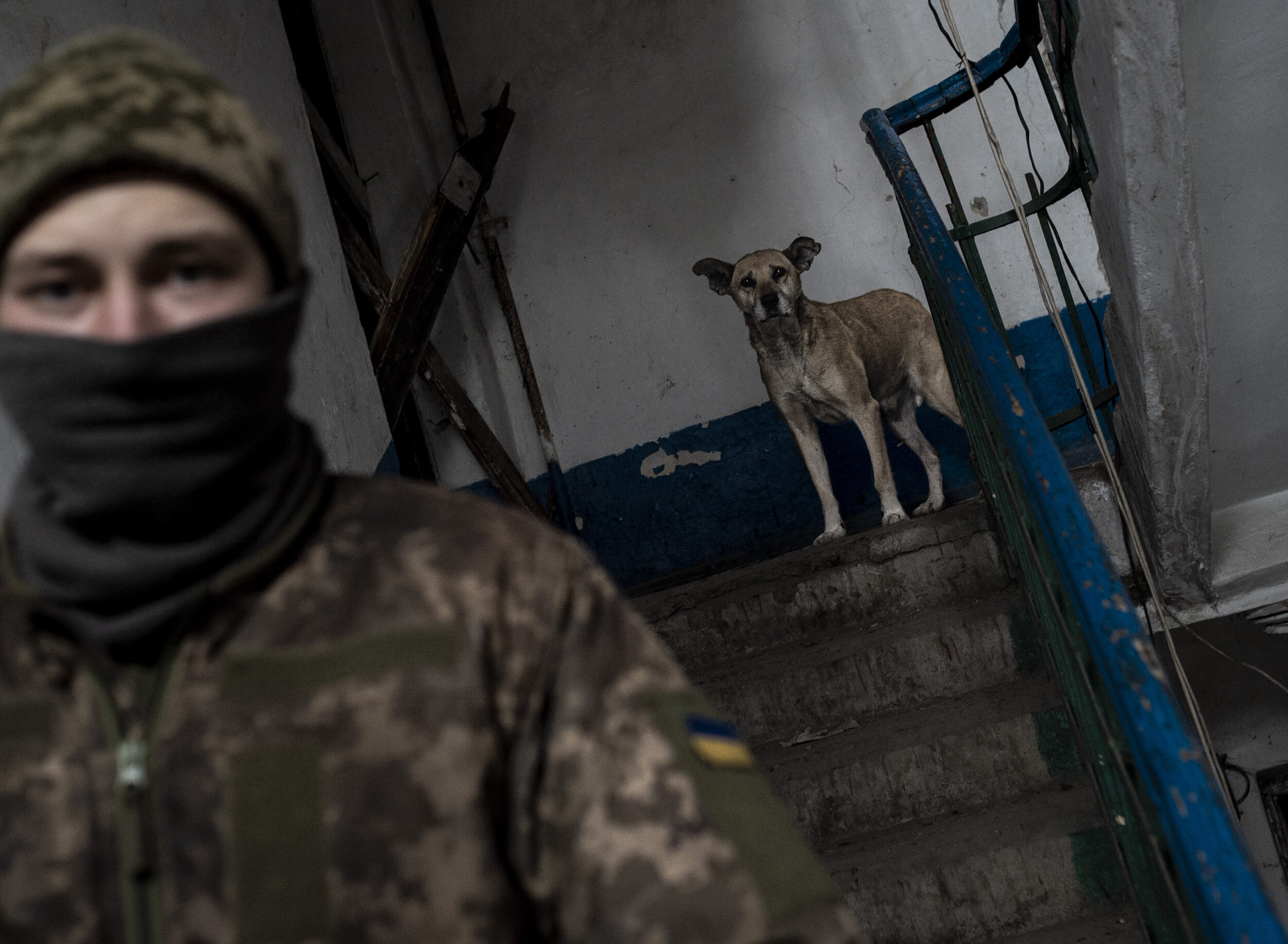
A Ukrainian soldier heads out to take up his guard shift at ‘Point Zero’ on February 27, 2019.
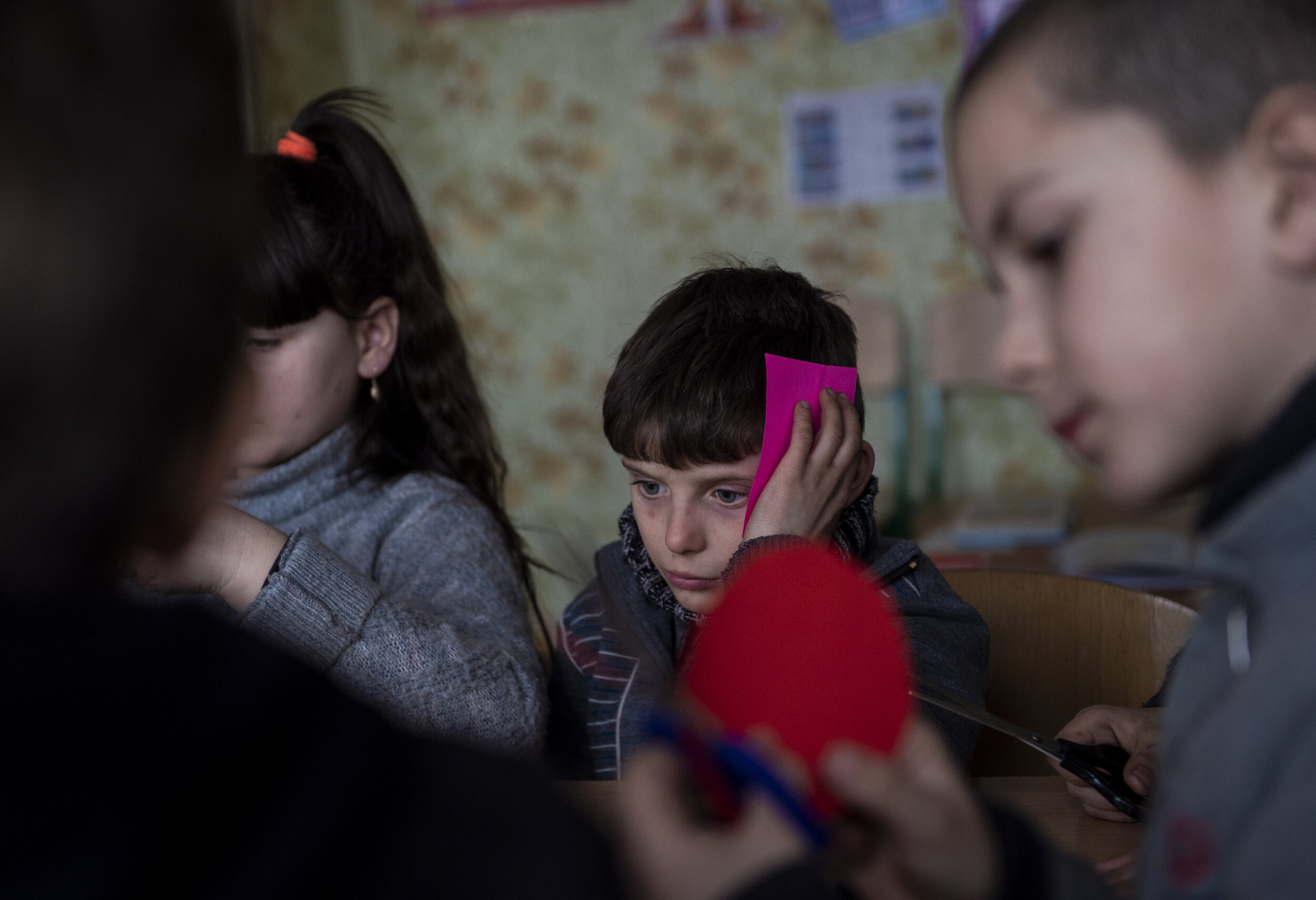
A young boy shows signs of shell shock while attending the battle-scarred school in Petrovsk after a night of non-stop shelling. Children living on the frontlines are highly susceptible to mental health and behavioral issues such as insomnia, anxiety, and depression.

A Ukrainian soldier rips the netting off an armored personnel carrier on the outskirts of Zolote on the frontlines near Luhansk in eastern Ukraine. While many regard the Donbas War as a frozen conflict places on the frontlines such as Zolote and Avdiivka remain highly contested and result in combat fatalities on a regular basis.
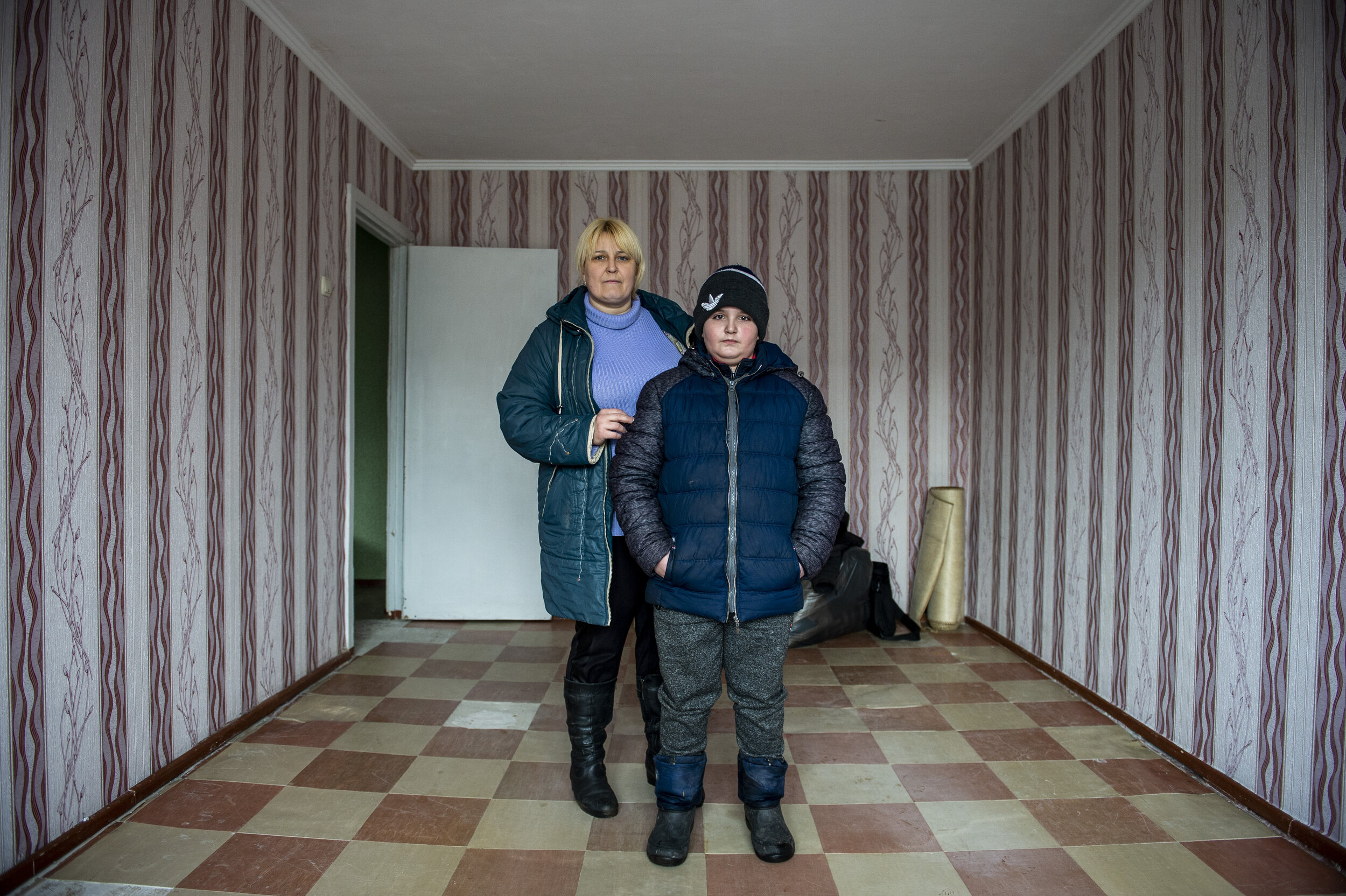
A mother and son pose for a portrait in their new apartment the morning after fleeing their old home after heavy shelling and fighting drove them and others in Zolote-4 away to seek a safer home. There are currently 1.5million internally displaced Ukrainian civilians as a result of constant fighting in Eastern Ukraine.
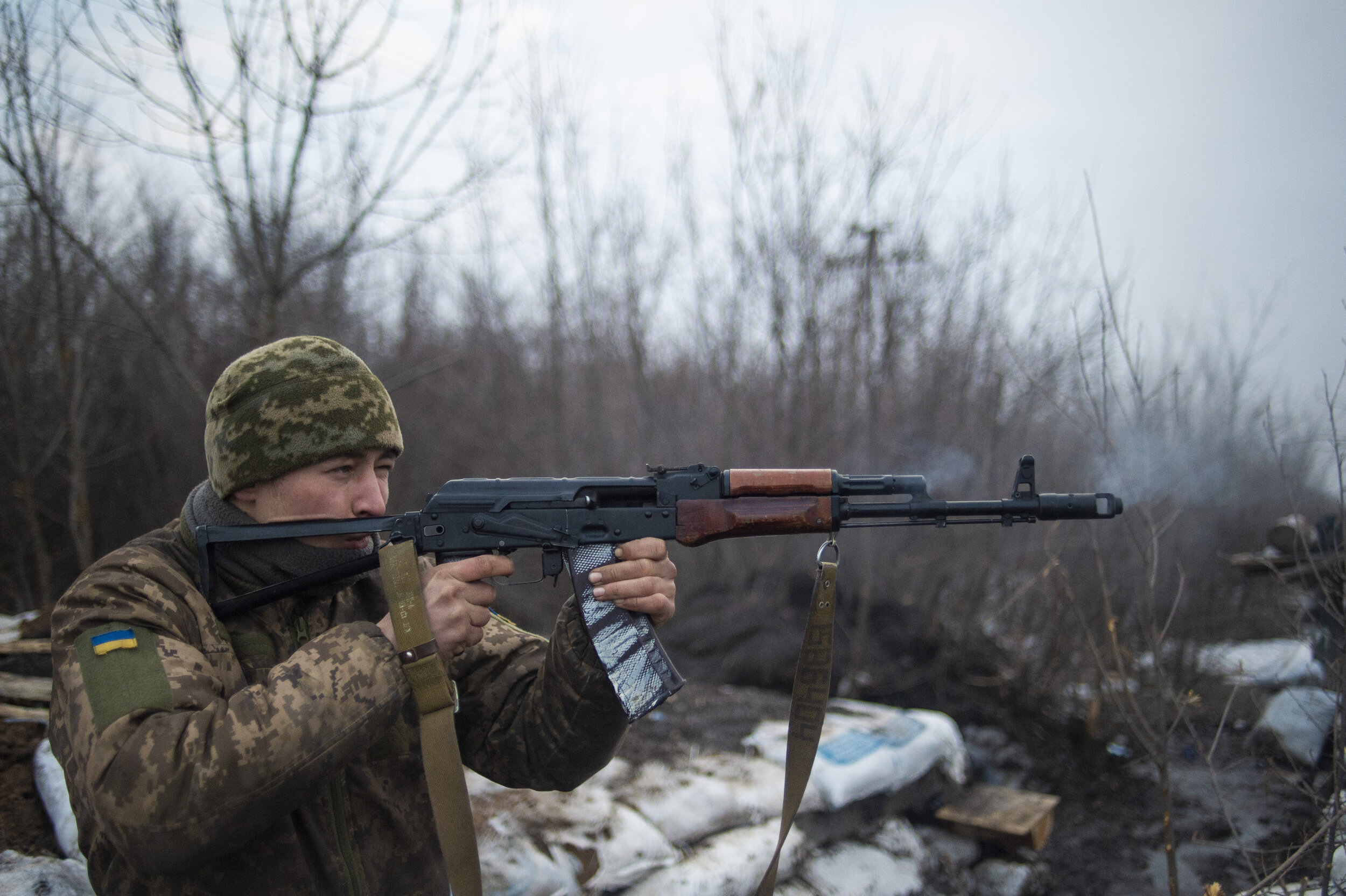
A Ukrainian soldier fires his rifle on the frontline position of ‘Point Zero’ in Zolote-4 after a night of sporadic mortar shelling on Ukrainian military positions on February 29, 2019. ‘Good morning’ shots are a staple of frontline life, both sides engage in an exchange of gunfire most mornings.
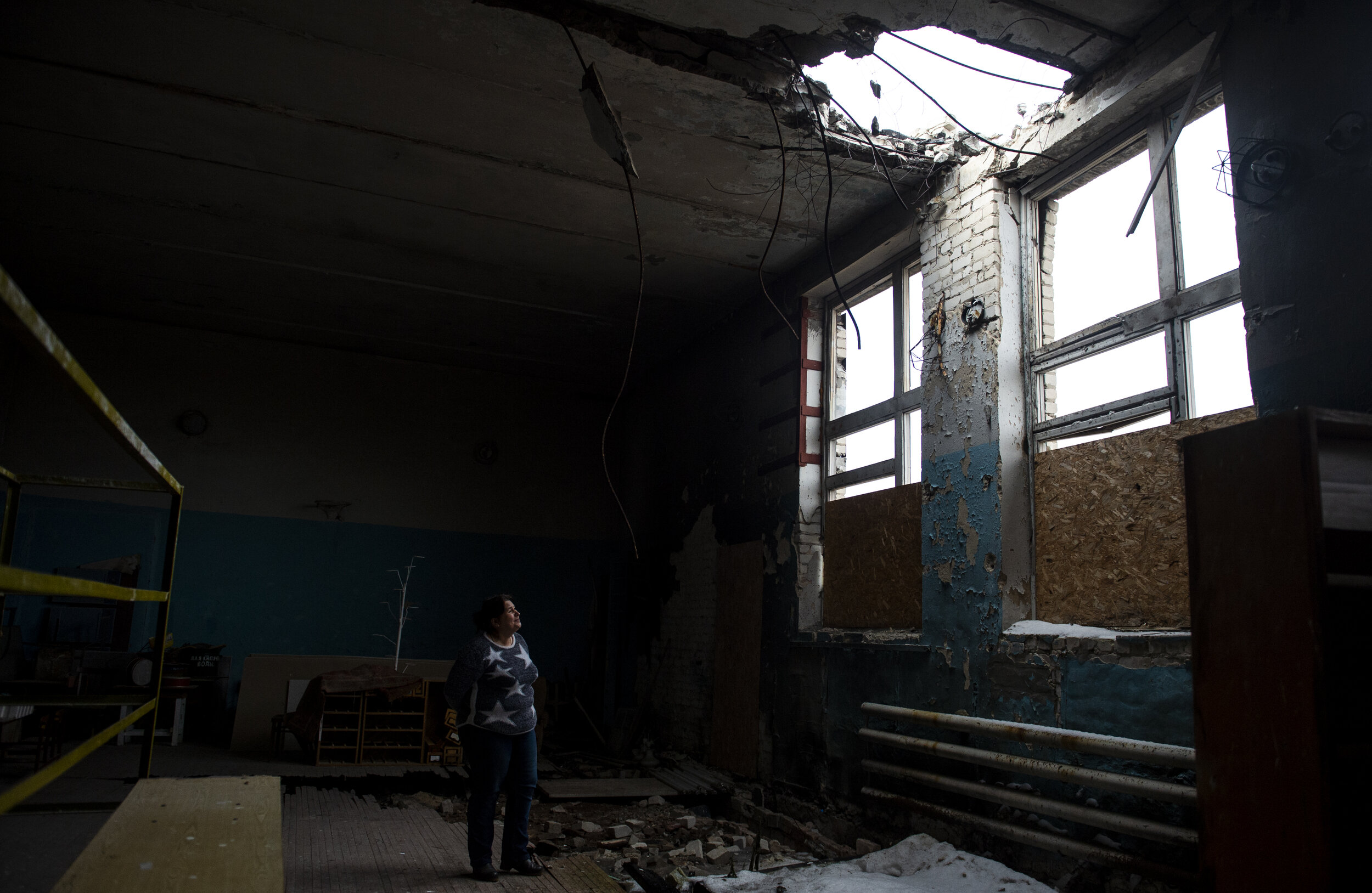
The principal of the school in Petrovsk examines a large hole in the gymnasium caused by an artillery shell. Despite attempts to keep civilian buildings such as schools and churches from being damaged the constant combat often results in some sort of new difficulty for civilian life.
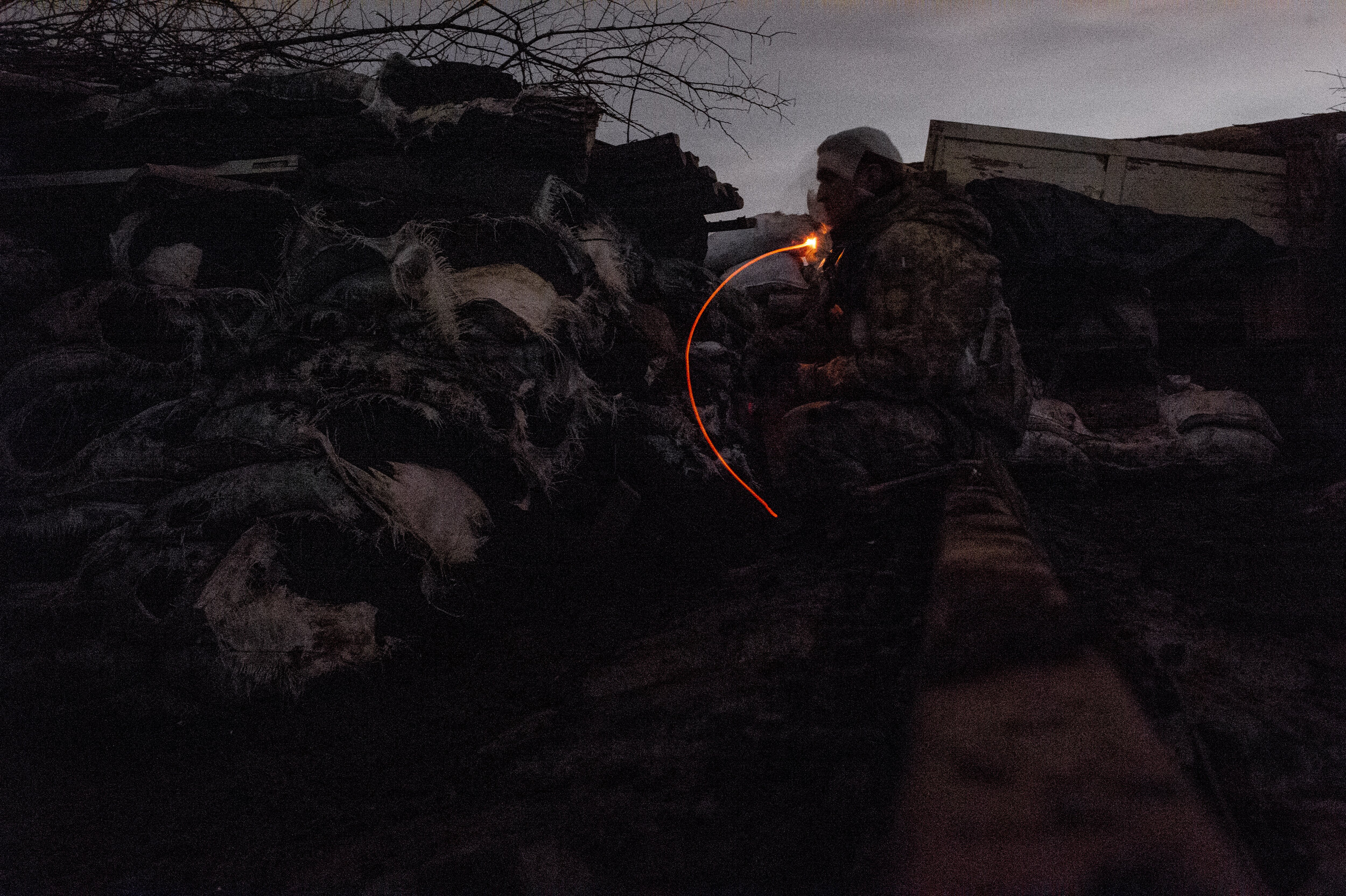
A Ukrainian soldier smokes a cigarette at ‘Point Zero’ in Zolote-4 as nightly firefights kick-off between soldiers and Russian backed separatists. While occasional gun battles occur throughout the day time, heavy fighting is reserved for the night.
















